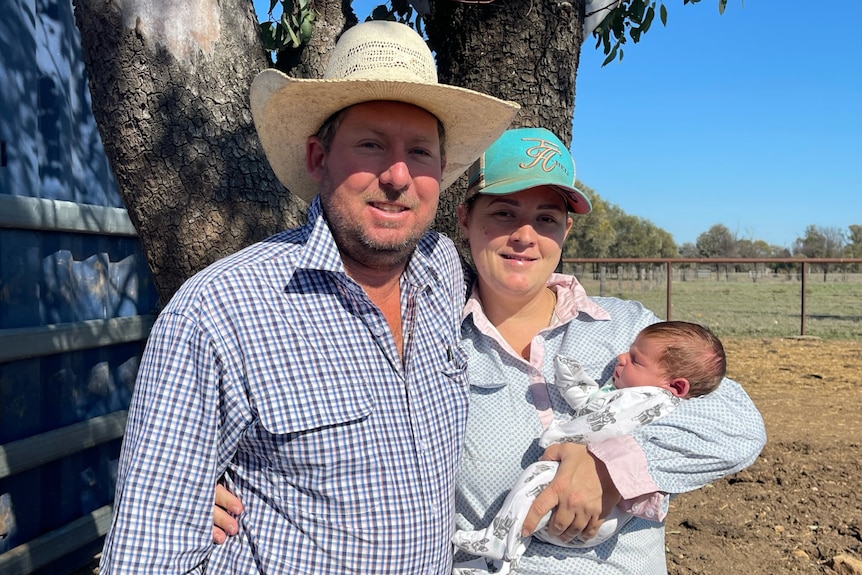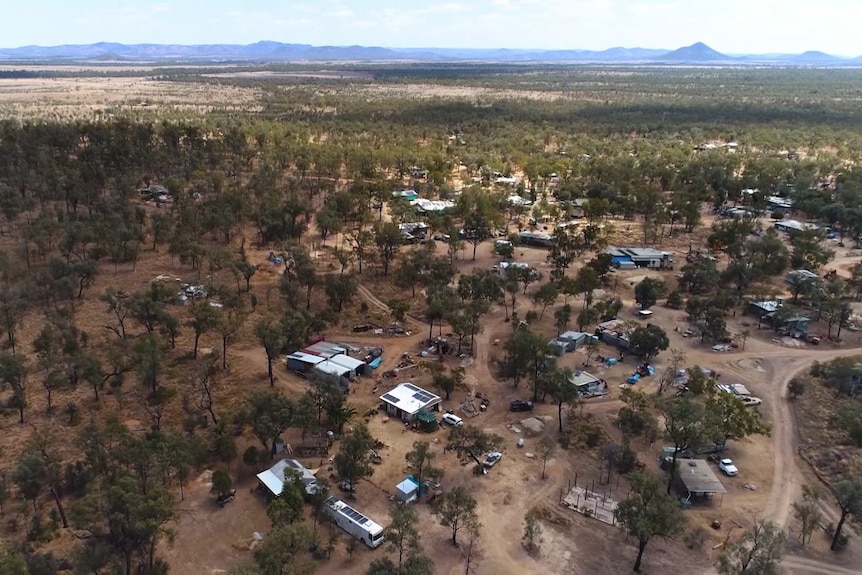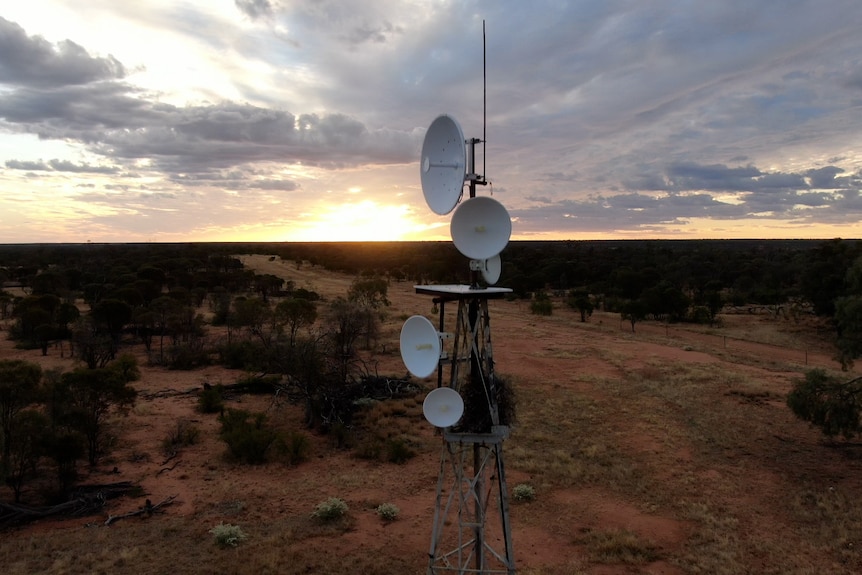Brodie and Jess Harvey were shocked when their two-week-old son Jace suddenly appeared.
The nearest hospital was over an hour’s drive from their place in rural central Queensland.
He tried to call the doctor but could not receive calls even though the phone tower was only 10 kilometers away from his home.
New data shows more than 50,000 complaints have been made to the Telecommunications Industry Ombudsman (TIO) from people living in rural, urban and remote areas of Australia about the lack of mobile phone and internet access.

Brodie and Jess Harvey welcomed their son Jace last month. (Provided by: Brodie Harvey)
Mr Harvey was able to use an old landline connection for help after several attempts.
In the end, their son had to be rushed to the hospital.
“He had spots up to his ears,” Harvey said.
Baby Jace has recovered from last month’s scare, but Mr Harvey said it was difficult.
“When it went on for so long we couldn’t communicate with anyone…it wasn’t good.”
Communication is getting worse
Their family lives near the town of Willows Gemfields in central Queensland, more than 350 kilometers south-west of Rockhampton.
Mr Harvey said he never thought he would be connected to an area that was supposed to have good phone service.

Brodie and Jess Harvey are frustrated by the lack of phone calls at their home. (Submitted by: Brody Harvey)
He said there was no 3G in the area and the 4G and 5G services were unreliable and often stopped working for hours.
He said his family started using Ultra high frequency (UHF) radios for communication.
“Between my parents’ house and my house, it’s maybe 200 meters and we can’t call each other,” he said.
“If something happens you may not have your phone.”
Mr Harvey complained to the Telstra service provider after he was frustrated that he was not received when his son fell ill.
He said the response he received from Telstra was that they could not accept the complaint because his mobile phone was linked to the family’s business plan.

Mr Harvey lives on a property near the Willows Gemfields in central Queensland. (ABC: Ways Back)
Service changes are underway
Telstra regional general manager Rachel Cliffe said the company was working to improve and expand coverage across Australia, including around the Willows Gemfields.
“Telstra has more revenue than any other telco in rural and urban Australia and our phones now reach 99.7 per cent of the population,” Cliffe said.
“We’ve invested $42 billion in our network over the last 10 years.”
He said Telstra had launched a 4G small cell in Lochington a few weeks ago, which helped mobile coverage south of the Willows Gemfields.
Ms Cliffe said there were plans to build a new mobile station nearby to improve coverage and traffic on Capricorn Highway.
He added that if customers want to improve their mobile phone, they can use their connection to the National Broadband Network to make Wi-Fi calls or install additional equipment to provide coverage.
“In some cases, cell phone coverage in their home or car can be increased by installing an aerial or booster phone,” he said.
Optus has also been contacted for comment.
The division of city and country
Data released by the Telecommunications Industry Ombudsman confirmed that people living in rural, urban and remote areas of Australia were worse off than those living in metro areas.
The Ombudsman received 51,854 telephone and online complaints from consumers between 2021 and 2024.
Complaints were related to errors, inadequate service, mobile phone malfunctions, outages and availability.

Cynthia Gebert says clear policies should be established for mobile applications. (Issued: Telecommunications Industry Ombudsman)
Telecommunications Ombudsman Cynthia Gebert said it is unacceptable to have so many people without reliable phones and internet.
“We need to ensure that there are clear benchmarks, clear standards that telco companies must meet,” he said.
“So that there is no different experience depending on where you live.”
Negative effects on business
Pet helper Bill Seeney, who relies on phone calls for his business, said he’s seen a huge increase in communication in recent years.
Hailing from Longreach in western Queensland, Mr Seeney said he walked several kilometers every week.
He said that black bars have started to be found in the middle of the regional towns.
“It’s very disappointing because mobile communications is one of the biggest parts of our business,” Seeney said.
He said that he was forced to drive 40 to 50 kilometers to receive guests.
“You’ll be in the middle of a call and you’ll just hang up,” Mr Seeney said.

Mr Seeney says connectivity issues are affecting his business. (ABC Western Queensland: Craig Fitzsimmons)
“We’re almost back to sat[ellite] phone days and it’s getting worse.”
Ms. Gebert said a telco outreach group is being set up to help people voice their concerns and resolve them quickly.
He said it will have sponsors and consumer organizations.
“We don’t want to promote the digital sector,” he said.
“It doesn’t show how important phones and the internet have become in our lives.”
He said the information would be forwarded to the government to assess the challenges faced by areas outside of metro Australia.
#Rural #families #forced #UHF #radios #communicate #calls